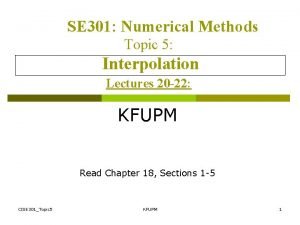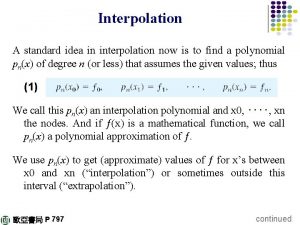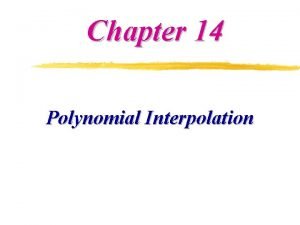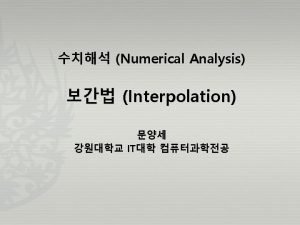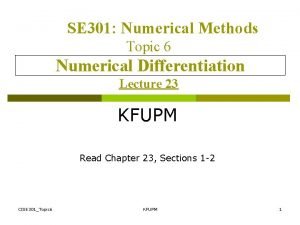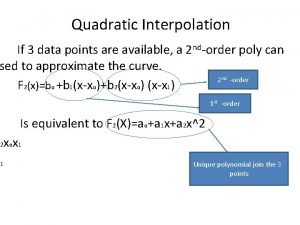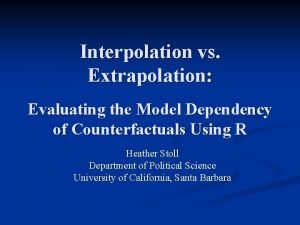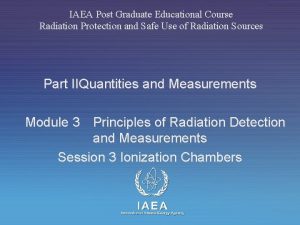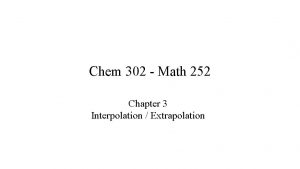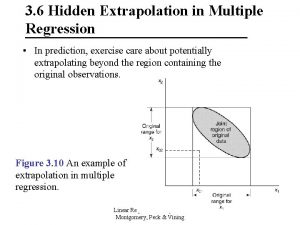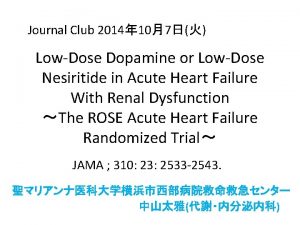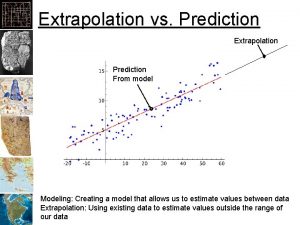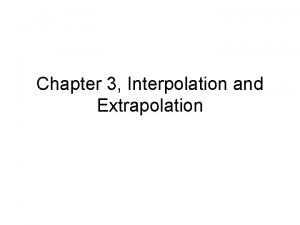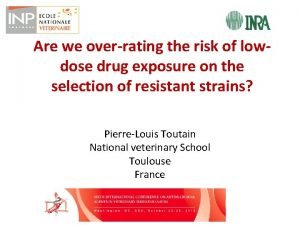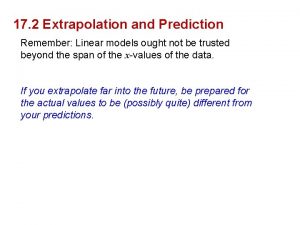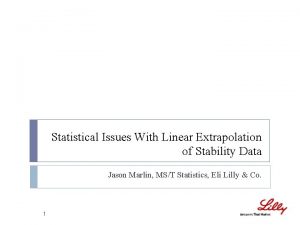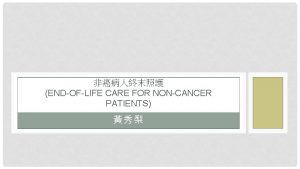Implications of Linear LowDose Extrapolation for Noncancer Risk













- Slides: 13

Implications of Linear Low-Dose Extrapolation for Noncancer Risk Assessment Oliver Kroner, Lynne Haber, Rick Hertzberg TERA

**This case study is a characterization of the method, and is not intended as endorsement or opposition of linear extrapolation. Method 1: extend a straight line from the chosen BMDL adjusted to the human equivalent dose or concentration (HED or HEC). Method 2: linearize HED(C) dose-response data using probit transformation in logarithmic space. Fit regression line to the data and extend to the lowdose

Response Method 1: Linear extrapolation from BMD Human Equivalent Dose 0. 1 UFA Dose UFD UFS Animal BMD

Results • Strengths: • simplicity • Provides Risk Specific Dose at any level of exposure • Weaknesses: • Risk estimates produced were highly conservative compared to current Rf. C/Rf. D methods • No consideration of biological understanding

Panel Comments • Possibly useful for screening level assessment or priority setting, but should not be construed as accurate estimate of risk • Requested exploration of non-cancer linear extrapolation in log-dose, probit space

Probit Transformation • Linearizes biological data • requires quantal population data • To allow graphing in log space, response rates were converted to Excess Risk [added risk(d) = P(d) - P(0)] for each dose group • a dataset of at least three test doses above the control From Casarett & Doull 2009

Probit Response Method 2: Linear extrapolation in Log. Dose, Probit Space Animal Data Human Equivalent Dose 5 UFA UFD Log Dose UFS


Summary of Results Method 1. Linear Extrapolation from BMD(L) Chemical Risk at Rf. C/Rf. D From BMD(C)L (Method 1) Oral Risk at Rf. C/Rf. D From BMD(C) (Method 4) Method 2. Log-Dose, Probit Risk at Rf. C/Rf. D Number of Dose Groups (other than control) Acrylamide 1 x 10 -2 3 x 10 -4 1 x 10 -3 3 Chlordecone 1 x 10 -2 1 x 10 -5 2 x 10 -3 4 1, 3 Dichloropropene 8 x 10 -3 6 x 10 -4 2 x 10 -12 3 Nitrobenzene 1 x 10 -2 4 x 10 -3 5 x 10 -1 3 Inhalation

Conclusions • Simple • Provides estimate of risk at any level of exposure But, • Limited Applicability: – Restrictive data requirements permitted the use of four of the 25 chemicals considered • Inconsistent Results: – Risk estimates at the Rf. D/Rf. C ranged from 1 x 10 -12 (1, 3 -dichloropropene) to 0. 5 (nitrobenzene).

Extra Slides

Areas of Uncertainty to Consider in Noncancer Dose Response Assessment Sub-chronic Animal Response Chronic Human Chronic Animal Reproductive UFL UFS 0. 1 UFH PBPK UFD UFA Dose

Calculation of Human Equivalence Dose or Concentration • Method 1 Benchmark Dose 95% Lower-bound confidence limit (BMDL) Uncertainty Factors: UFS, UFA, and UFD • Method 2 Benchmark Dose (BMD) Uncertainty Factors: UFS, UFA, and UFD • Method 3. Benchmark Dose (BMD) Uncertainty Factors: geometric means of the UFS, UFA, and UFD • Method 4. Benchmark Dose (BMD) Uncertainty Factors: geometric mean of the UFA
 Interpolation method example
Interpolation method example Newton interpolation formula
Newton interpolation formula Lagrange interpolation
Lagrange interpolation Linear extrapolation
Linear extrapolation Linear
Linear Credit risk market risk operational risk
Credit risk market risk operational risk Extrapolation formula
Extrapolation formula Quadratic interpolation formula
Quadratic interpolation formula Unwarranted extrapolation examples
Unwarranted extrapolation examples Extrapolation vs interpolation
Extrapolation vs interpolation Extrapolation
Extrapolation Extrapolate formula
Extrapolate formula Peak position
Peak position Hidden extrapolation
Hidden extrapolation
